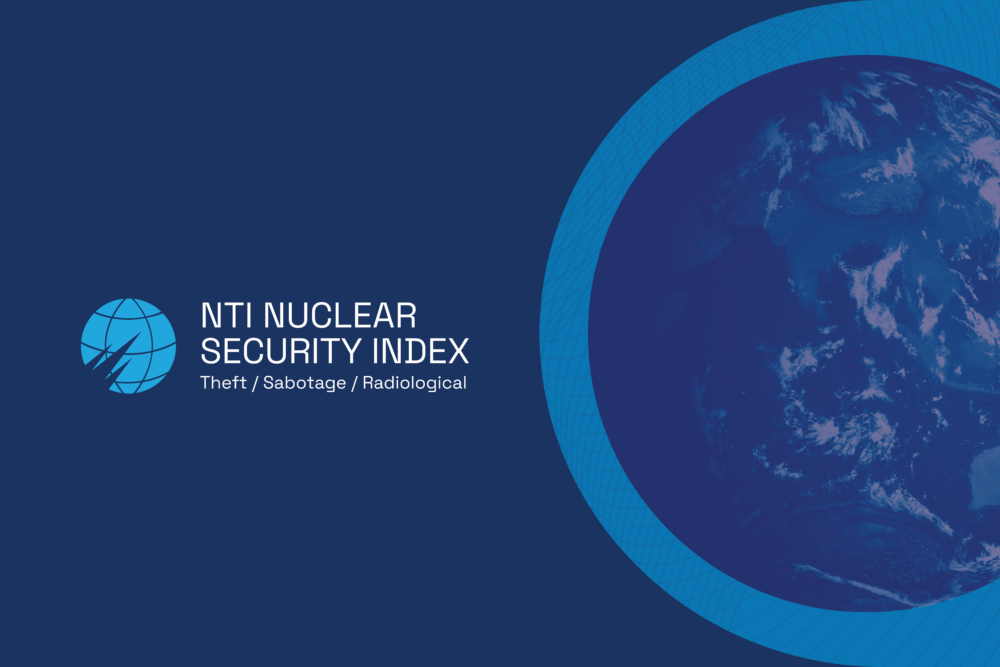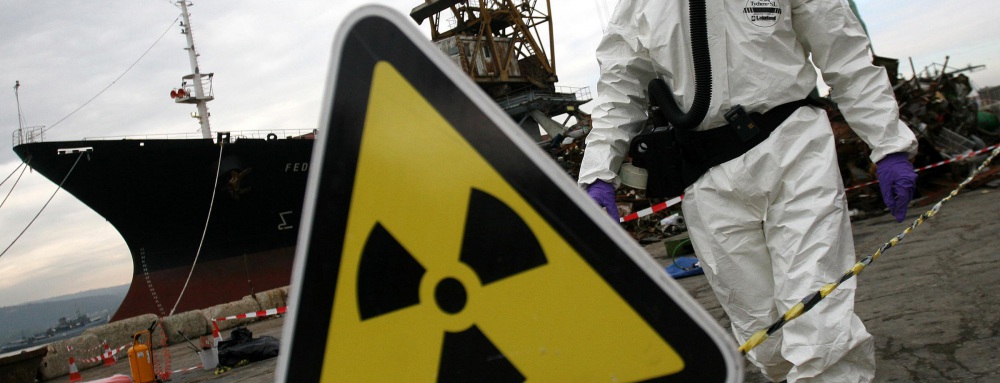
Miles Pomper
Senior Research Associate, The James Martin Center for Nonproliferation Studies
Although China and the United States clash over trade policy, the South China Sea, and strategies for North Korean denuclearization, there are ongoing, little known, success stories of cooperation between the two countries in the nuclear security realm. Learning from these under-the-radar success stories is all the more critical in the era of COVID-19, as they highlight the ways in which U.S. and Chinese interests are interdependent, requiring cooperation for either side to achieve a positive outcome. Since 2009, China and the United States have partnered on an initiative to convert Chinese-origin Miniature Neutron Source Reactors (MNSRs), a type of nuclear research reactor, from using nuclear weapons-grade highly enriched uranium (HEU) fuel to low-enriched uranium (LEU) fuel. LEU is not directly useable in nuclear weapons, making converted reactors more proliferation-resistant. Since research reactors are frequently located in low security areas, such as university campuses, and may operate in countries especially vulnerable to terrorism, reactor conversions eliminate potential targets for terrorists seeking to acquire the materials for a nuclear weapon.
As of June 2020, three of the last MNSRs outside of China, which are located in Iran, Pakistan, and Syria, have yet to be converted to LEU fuel. China also has one more MNSR at Shenzhen University that is slated for conversion. Discussions are currently underway to determine which of the four reactors will be converted next.
The latest success of the U.S.-China joint initiative occurred in Nigeria, where in early November 2018, scientists from China and the United States announced the completed conversion of Nigeria’s Miniature Neutron Source Reactor (MNSR). The Nigerian effort marked the second successful MNSR conversion carried out by the U.S. Argonne National Laboratory (ANL) and the China Institute of Atomic Energy (CIAE) outside of China. Teams from the two countries completed a similar conversion in Ghana in 2017. [1]
For more than four decades, the United States has supported efforts to convert reactors from HEU to LEU in order to reduce proliferation and terrorism risks. MNSRs, along with other types of research reactors, have significant positive scientific and industrial applications; research reactors are used to train scientists, conduct experiments, and produce radioisotopes for medical treatments and diagnostics such as cancer therapy and heart disease detection. Unfortunately, those that use HEU fuel represent a highly attractive target for terrorists or would-be proliferators, given that it can be used in the simplest nuclear weapons design, a gun-type weapon like the bomb dropped on Hiroshima. [2] There is agreement among experts that a financially and organizationally strong terrorist group might have the technical capability to create an improvised nuclear device based on a gun-type design. [3] To make matters worse, because HEU is only weakly radioactive, it is relatively safe to handle and would be hard to detect if stolen by terrorists.
Before the joint initiative began, the United States primarily focused on converting U.S.-supplied reactors and those provided by the former Soviet Union, which used larger quantities of HEU. However, in 2009 during an industry meeting in Beijing, the United States and China agreed to address reactors with smaller, but still proliferation-sensitive, quantities of HEU, and specifically, MNSRs that China had supplied to Iran, Pakistan, Syria, Ghana, and Nigeria. [4] Over the next year, the two sides worked out the details of a deal in which the United States would pay $1.7 million and build a Zero Power Test Facility (ZPTF) in China. The facility would be used to test new LEU MNSR cores to ensure that they met existing reactor performance and safety standards. [5] In return, China would shoulder the cost of converting the MNSRs that it had supplied [6]
China and the United States first partnered with Ghana and Nigeria to carry out detailed technical studies to ensure that performance and safety standards could be maintained after converting the MNSR reactors. Experts from the International Atomic Energy Agency were also involved in the process. In 2016, a prototype reactor was converted in China, followed by the Ghana conversion in 2017. That set the stage for the most recent conversion of the NIRR-1 reactor in Nigeria, with the new core going critical on 2 November 2018. [7]
Converting reactors is a time consuming and technically demanding process akin to using a new kind of fuel in a car engine while trying to maintain the car’s performance and safety without altering the engine’s basic dimensions or operating costs. [8] It is not possible to swap equal amounts of typical LEU fuel for HEU fuel and maintain the reactor’s same level of power output. At a lower power output, the traditional LEU-fueled reactors cannot produce the same flow of neutrons through the reactor core, known as the“neutron flux,” needed for certain scientific experiments and radioisotope production. The neutron flux is the bread-and-butter for the functionality of the nuclear reactor. In order to ensure the same performance from the MNSR, a new LEU core had to be designed that would produce the same neutron flux in the reactor fission process as with HEU.
In the case of the Nigerian MNSR conversion, Nigerian, Chinese and American scientists redesigned the fuel rods in such a way that, while the proportion of U-235 in the fuel decreased from 90 to 13 percent, the amount of U-235 in the core actually increased by almost 40% due to the new LEU core containing almost ten times as much uranium as the old HEU core. [9] [10] This allowed the enrichment to be freely tuned to produce the same capability as the HEU core, enabling the MNSR to operate at the same level of performance while running on a non-nuclear weapons useable fuel source.
Chinese-American collaboration on MNSR conversion with third countries like Nigeria and Ghana is one example of how countries can work to prevent nuclear proliferation and reduce the likelihood of nuclear terrorism, while preserving the functionality of research reactors. Successful reactor conversions, like those in Ghana and Nigeria, are evidence that nuclear security concerns can be appropriately addressed without infringing upon scientific and medical advancements, or the educational opportunities made possible by nuclear research reactors.
Sources:
[1] World Nuclear News, 11 August 2017, www.world-nuclear-news.org.
[2] See, for example Annette Schaper, Highly Enriched Uranium: A Dangerous Substance That Should Be Eliminated, Report No. 124, Peace Research Institute Frankfurt, 2013, 3–6, www.hsfk.de; and Alan J. Kuperman, ed., Nuclear Terrorism and Global Security: The Challenge of Phasing Out Highly Enriched Uranium (Abingdon, UK: Routledge, 2013), 4–5.
[3] Charles D. Ferguson, William C. Potter, The Four Faces of Nuclear Terrorism (New York: Routledge, 2005), 134.
[4] China also built 4 for domestic use, two of which have been decommissioned.
[5] S. A. Jonah, Y. A. Ahmed, Conversion of Nigeria MNSR and Lessons Learned from Operator’s Perspective, International Meeting on Reduced Enrichment for Research and Test Reactors, Edinburgh, Scotland, 4 November 2018, www.rertr.anl.gov, http://pub.iaea.org.
[6] Alan J. Kuperman, ed., Nuclear Terrorism and Global Security: The Challenge of Phasing Out Highly Enriched Uranium (Abingdon, UK: Routledge, 2013), 106.
[7] S. A. Jonah, Y. A. Ahmed, Conversion of Nigeria MNSR and Lessons Learned from Operator’s Perspective, International Meeting on Reduced Enrichment for Research and Test Reactors, Edinburgh, Scotland, 4 November 2018, www.rertr.anl.gov.
[8] Miles A. Pomper, “The 2012 Seoul Nuclear Security Summit and HEU Minimization,” US-Korea Institute at SAIS working paper, January 2012, www.uskoreainstitute.org.
[9] Ratio of the amount of U-235 in the core for HEU and LEU cores (=1357.86/990.12=36%). See Table 1 for the Ghana reactor, www.rertr.anl.gov.
[10] (1357.86/0.125)/(998.12/0.902)=9.8 see Table 1, www.rertr.anl.gov. See also Table 1, www.ansannual.org.
Sign up for our newsletter to get the latest on nuclear and biological threats.
The NTI Index is recognized as the premier resource and tool for evaluating global nuclear and radiological security.
Nuclear and radiological security aims to ensure nuclear and other radioactive materials are secure from unauthorized access and theft, and that nuclear facilities are secure from sabotage.
Though considerable progress has been made in bolstering the security around facilities with highly enriched uranium, with the help of the Nuclear Security Summit process, challenges remain. NTI Vice President Laura S. H. Holgate offers recommendations at the HEU Symposium in Oslo, Norway.

